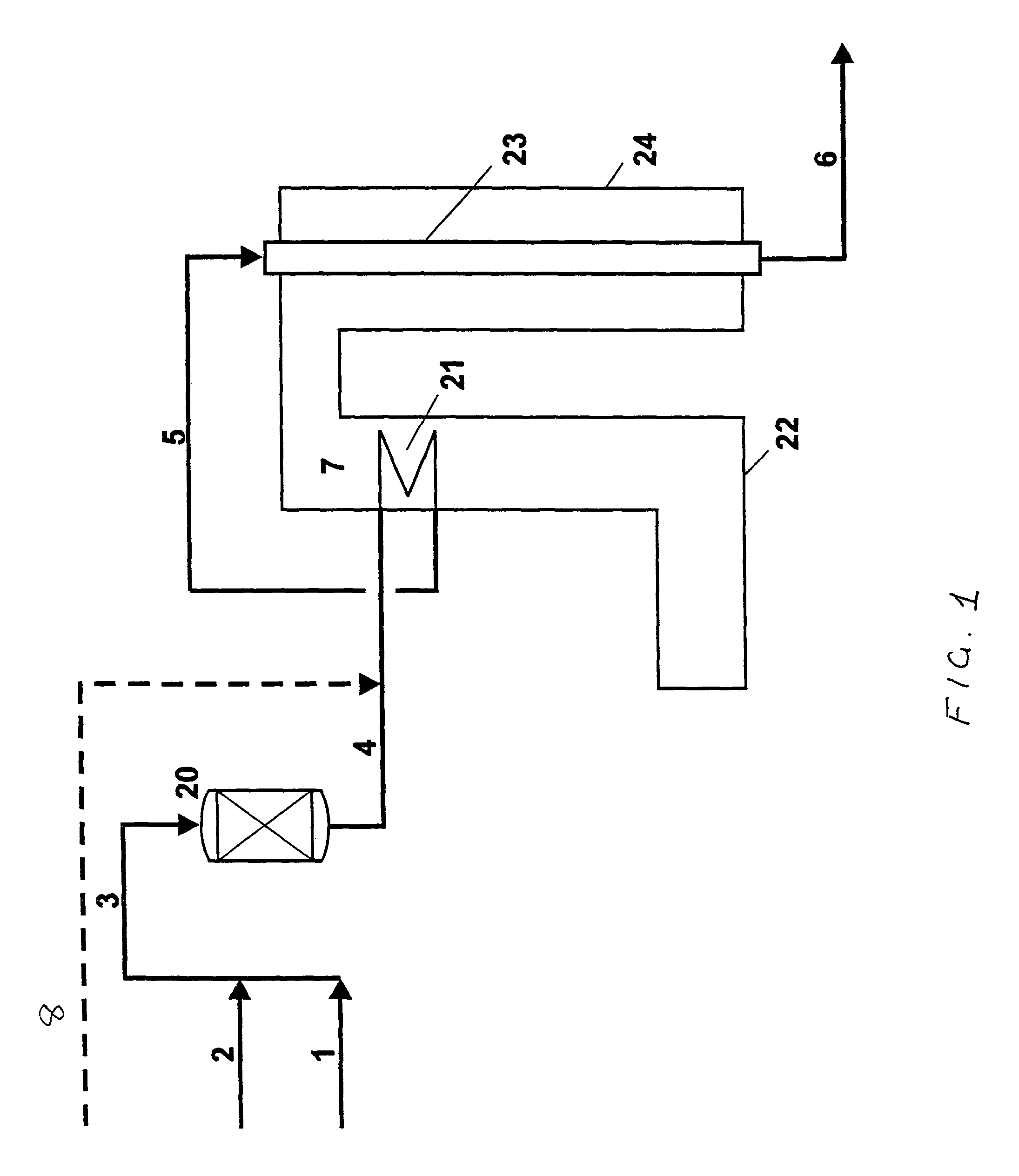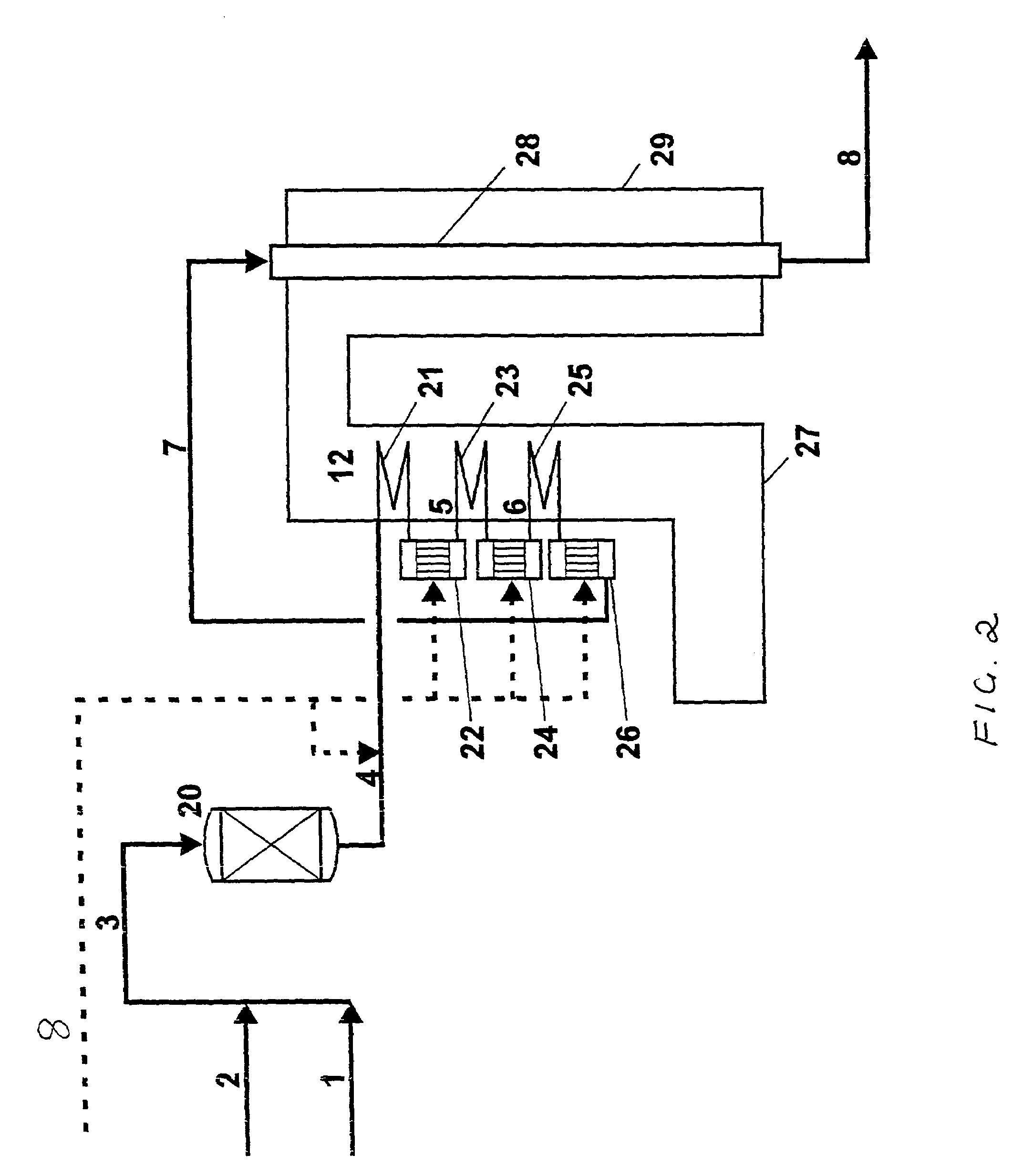Process for the preparation of synthesis gas
a technology of synthesis gas and process, which is applied in the direction of lighting and heating apparatus, physical/chemical process catalysts, energy input, etc., can solve the problems of time-consuming and expensive replacement of spent catalyst, affecting and reducing the activity of catalysts at long intervals. , to achieve the effect of improving the utilisation of heat content in the flue gas and easy catalyst replacemen
- Summary
- Abstract
- Description
- Claims
- Application Information
AI Technical Summary
Benefits of technology
Problems solved by technology
Method used
Image
Examples
example 1
[0060]A comparison of the amount of catalyst required in a process of the invention as compared to a conventional process was made.
[0061]The conventional process was carried out by feeding hydrocarbon and steam into a pre-reformer followed by heating in a coil in the flue gas-containing waste heat section of a tubular reformer. Initially the feed was heated prior to passage through the first adiabatic reactor containing steam reforming catalyst pellets. Subsequently, the mixture was reheated and reacted again, the number of reheating and reaction steps repeated until four reheating steps and four reaction steps altogether had been carried out.
[0062]In the a process of the invention a feed consisting of hydrocarbon and steam was fed into a pre-reformer followed by passage through a piping system in the flue gas-containing waste heat section of a tubular reformer. Initially the feed was heated prior to passage through the first adiabatic header system containing a catalysed structured...
example 2
[0066]This example is based on the systems described in FIGS. 1 and 2, without CO2 addition. A waste heat boiler was placed in the flue gas section of the reformer, required in order to obtain overall high energy efficiency by recovering the heat content in the flue gas.
[0067]The figures shown in Table 2 indicate that substantial savings are obtainable using the process of the invention.
[0068]
TABLE 2Comparison of the duty distribution ina Conventional process compared withprocess of the inventionConventionalInventionPrimary reformer duty,40.322.6Gcal / hReheat coil duty,5.3n.a.Gcal / hReheat coil / headern.a.12.0system with structurecatalyst duty, Gcal / hTotal Reforming Duty,45.645.6Gcal / hFlue Gas Flow, Nm3 / h10516692054Waste heat boiler9.82.0duty, Gcal / h
[0069]The results showed that the duty required by the reformer was much less in the case where the process of the invention was used. A smaller reformer can therefore be used in the process of the invention. The amount of steam generated w...
PUM
| Property | Measurement | Unit |
|---|---|---|
| temperature | aaaaa | aaaaa |
| inlet temperature | aaaaa | aaaaa |
| inlet temperature | aaaaa | aaaaa |
Abstract
Description
Claims
Application Information
 Login to View More
Login to View More - R&D
- Intellectual Property
- Life Sciences
- Materials
- Tech Scout
- Unparalleled Data Quality
- Higher Quality Content
- 60% Fewer Hallucinations
Browse by: Latest US Patents, China's latest patents, Technical Efficacy Thesaurus, Application Domain, Technology Topic, Popular Technical Reports.
© 2025 PatSnap. All rights reserved.Legal|Privacy policy|Modern Slavery Act Transparency Statement|Sitemap|About US| Contact US: help@patsnap.com



